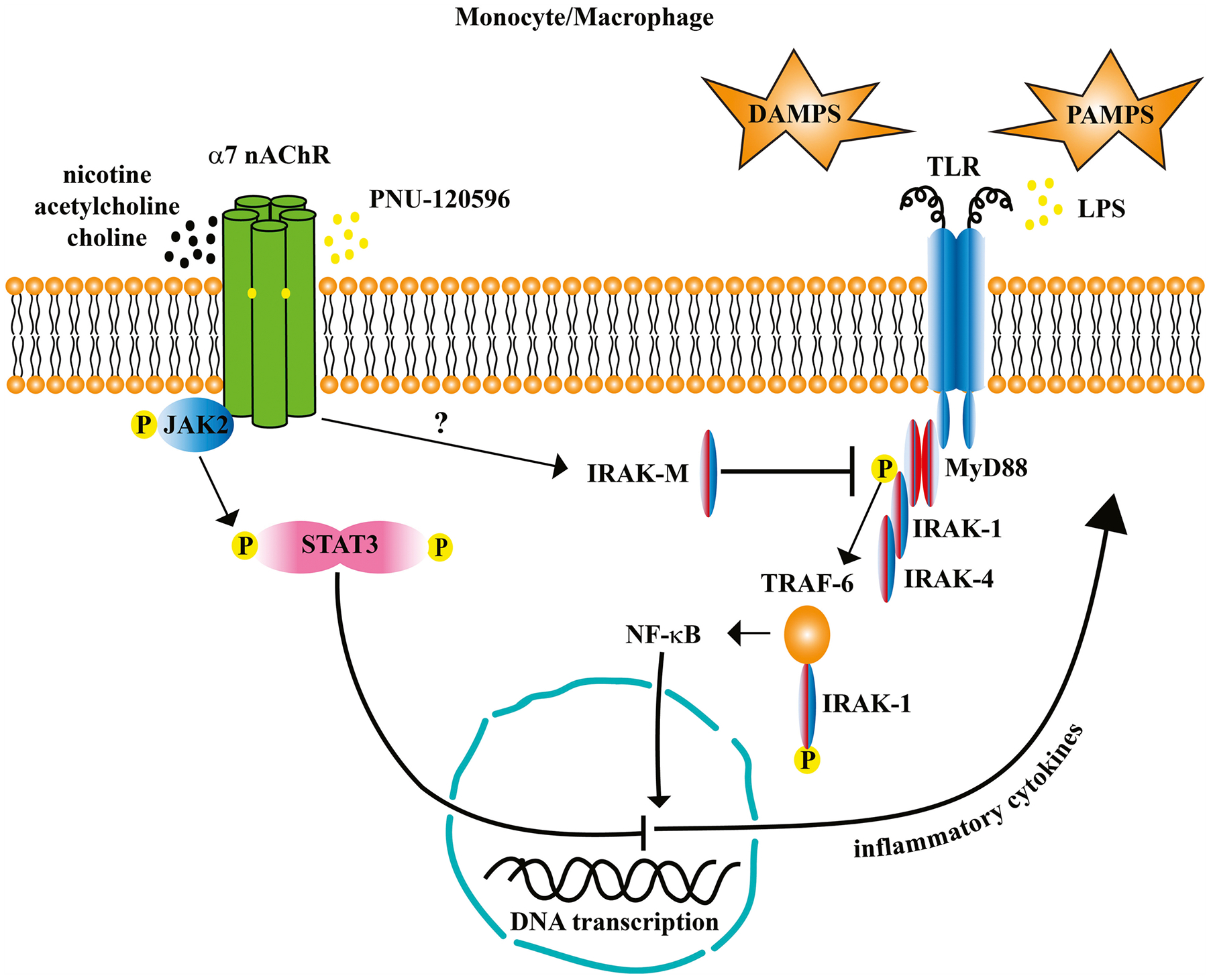Fig. 2.

Nicotinic acetylcholine receptor (nAChR) α7 inhibits the production of inflammatory cytokines by suppressing downstream pathways triggered by stimulation of toll-like receptors (TLR) by damage-associated molecular patterns (DAMPS) and pathogen-associated molecular patterns (PAMPS). In this model, stimulation of α7 nAChRs activates the Janus Kinase-2 (JAK2) signal-transducer and activator of transcription-3 (STAT3) signaling pathway. JAK2 phosphorylates STAT3 which dimerizes and translocates to the nucleus where it interferes with nuclear factor kappa-B (NF-κB) binding to DNA and prevents the transcription of genes for inflammatory cytokines. Interleukin-1 receptor associated kinase-M (IRAK-M), an IRAK specific to monocytes and macrophages, inhibits the phosphorylation of IRAK-1 by IRAK-4. The downstream effects are to inhibit the oligomerization of tumor necrosis-factor receptor-associated factor-6 (TRAF-6) and IRAK-1. The TRAF-6/TRAK-1 complex activates NF-κB which translocates to the nucleus and binds to DNA to initiate the production of inflammatory cytokines. How IRAK-M becomes activated by stimulation of α7 nAChRs is currently under investigation but may involve other intermediary molecules such as G-proteins. For brevity, not all intermediaries in the pathways are shown; for a thorough review of NF-κB signaling see Liu et al., [131].
